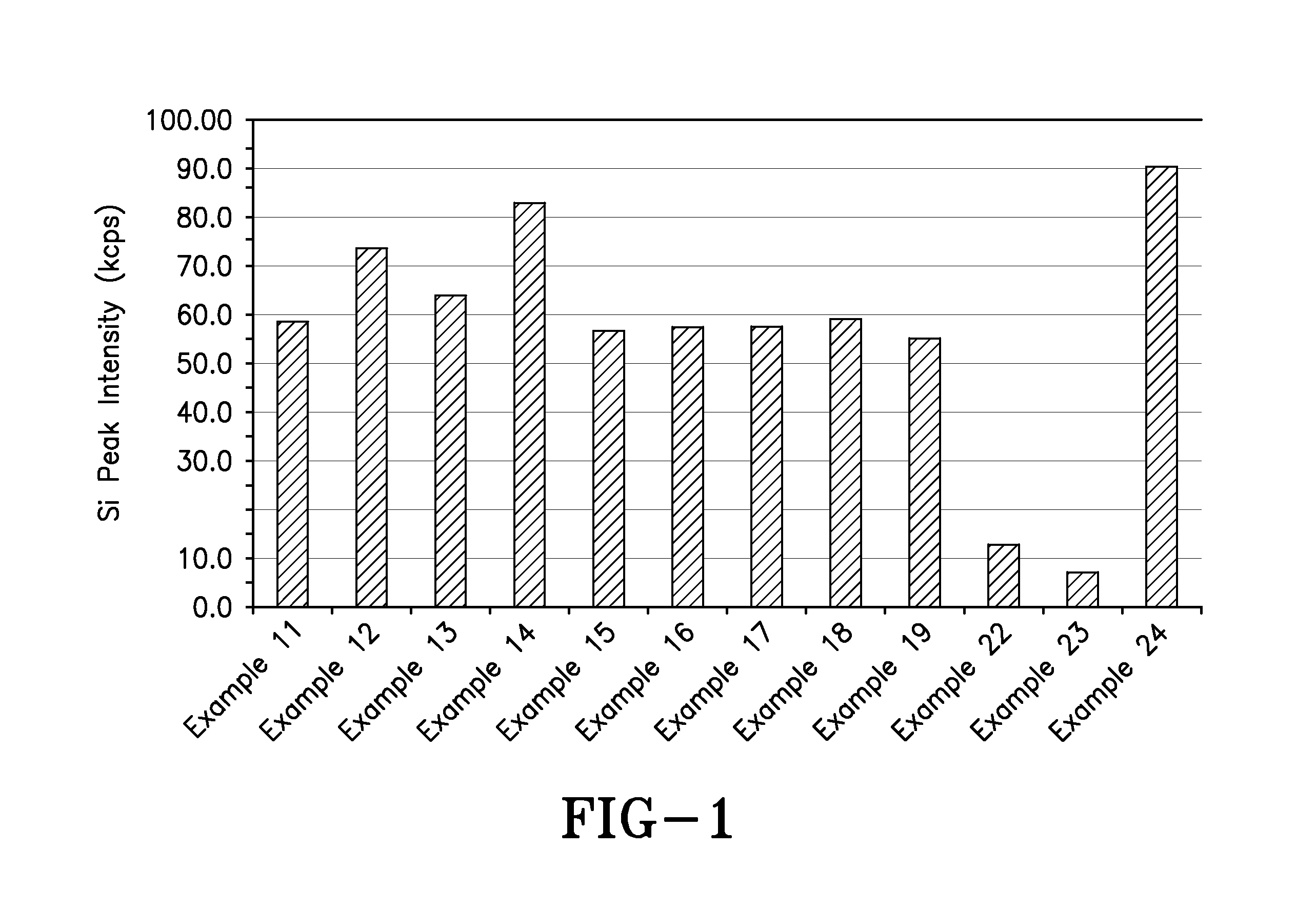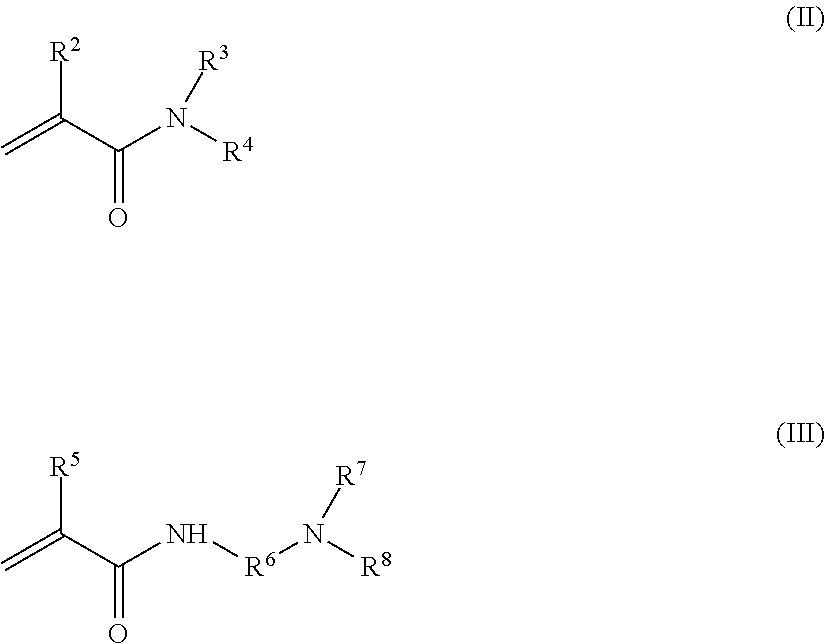Surfactant Activated Microgel Polymers And Methods To Mitigate The Loss Of Silicone Deposition From Keratinous Substrates
a technology of activated microgels and surfactants, which is applied in the direction of hair cosmetics, medical preparations, cosmetic preparations, etc., can solve the problems of difficult to obtain good deposition of silicone conditioning agents, low consumer quality, and relatively low viscosity, and achieve excellent yield stress and deterrent properties, stable silicone containing cleansing compositions
- Summary
- Abstract
- Description
- Claims
- Application Information
AI Technical Summary
Benefits of technology
Problems solved by technology
Method used
Image
Examples
examples 1-10
[0264]A free radical initiated dispersion polymerization is utilized to prepare the nonionic, amphiphilic polymer component of the invention. The polymerization reactor consists of a water-cooled resin kettle equipped with a reflux condenser, nitrogen purging tube, a mechanical agitator and a thermal-couple connected to a temperature control module. Admixtures of monomers, crosslinkers, and processing aids set forth in Table 1 are added to the resin kettle, followed by the polymerization solvent. The quantities of these components in wt. % for the various polymer preparations are shown in the table. While the reaction medium is heated to the target polymerization temperature, the reactor is purged with nitrogen for at least half an hour. As the reactor temperature reaches the set polymerization temperature, typically at about 67° C., the initiator solution 2,2′-azobis(2-methylbutyronitrile) (0.12 wt. % based on the dry weight of the polymer) is injected into the reaction kettle to s...
examples 11-24
[0265]Two-in-one conditioning shampoos containing the nonionic, amphiphilic polymers prepared in accordance with Examples 1-10 are formulated with the components set forth in Table 2.
TABLE 2AmountComponentActive (wt. %)PART AD.I. Waterq.s. to 100Powdered Dispersion PolymerTable 3Sulfochem ™ ES-2 CWK anionic surfactant14Chembetaine ™ C amphoteric surfactant3PART BJaguar ® C13-S cationic guar deposition aid0.25PART CDow Corning ® silicone emulsion (DC 2-1352)2Glydant ® Plus preservative0.22PART DNaOH (18% aqueous wt. / wt.) pH adjusting agentq.s. to pH 6
[0266]The shampoo compositions are prepared in accordance with the following procedure:
Part A:
[0267]1) Homogeneously disperse the polymer in D.I. water;
2) Add anionic and amphoteric surfactants and mix for 15 min.
Part B:
[0268]3) Prepare a 2 wt. % (wt. / wt.) dispersion of cationic guar in D.I. water and mix with Part A components.
Part C:
[0269]4) Add Part C components to Part AB component mixture and mix until homogeneous;
4) Adjust the pH o...
example 25
[0273]A linear copolymer of Poly(l-vinylpyrrolidone-co-vinyl acetate) (62.7 wt. % NVP residues, 37.3 wt. % VA residues) obtained from Sigma-Aldrich (CAS No. 25086-89-9) is formulated into a two-in-one shampoo composition utilizing the same components as set forth in Examples 11-24, except that 1.5 wt. % of the linear copolymer (100% active), 15 wt. % Sulfochem™ ES-2 CWK anionic surfactant, and 2 wt. % Chembetaine™ C amphoteric surfactant, (all weights based on the total weight of the formulated composition) are utilized. The amount of silicon (silicon atoms) deposited on wool muslin swatch samples treated with the 2-in-1 shampoo compositions is measured by X-Ray fluorescence (XRF) spectroscopy in accordance with the test methodology set forth above. The yield stress (24 hrs. after formulation) of the shampoo composition is also measured as set forth in the methodology above.
[0274]The measured silicon peak intensity is 71.8 kcps, and the yield stress of the shampoo formulation is 0 P...
PUM
| Property | Measurement | Unit |
|---|---|---|
| Temperature | aaaaa | aaaaa |
| Length | aaaaa | aaaaa |
| Length | aaaaa | aaaaa |
Abstract
Description
Claims
Application Information
 Login to View More
Login to View More - R&D
- Intellectual Property
- Life Sciences
- Materials
- Tech Scout
- Unparalleled Data Quality
- Higher Quality Content
- 60% Fewer Hallucinations
Browse by: Latest US Patents, China's latest patents, Technical Efficacy Thesaurus, Application Domain, Technology Topic, Popular Technical Reports.
© 2025 PatSnap. All rights reserved.Legal|Privacy policy|Modern Slavery Act Transparency Statement|Sitemap|About US| Contact US: help@patsnap.com



